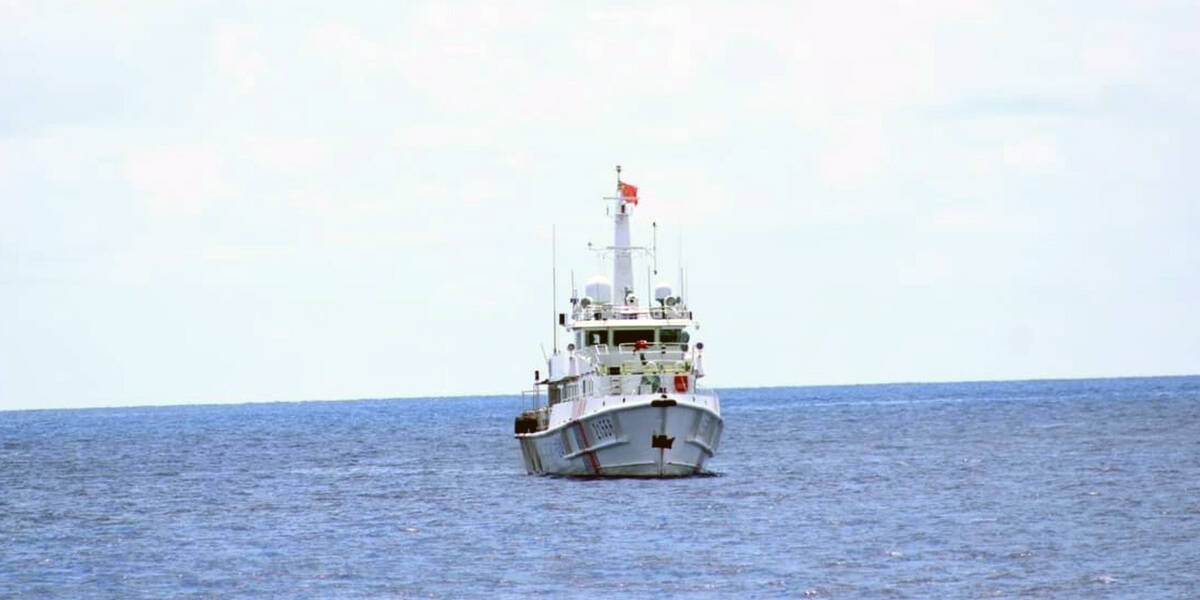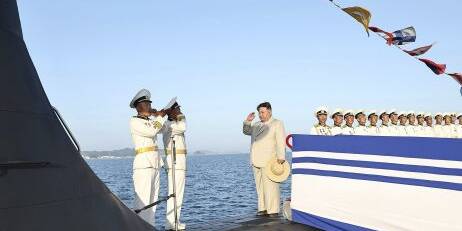Tran Đinh Hoanh for the Pacific Forum
During China Foreign Ministry Spokesperson Wang Wenbin’s Regular Press Conference on June 13, he responded to a Bloomberg question concerning the legal status of the Taiwan Strait. Asked about Chinese military officials’ contention that the Taiwan Strait does not constitute “international waters,” he said that Taiwan is “an inalienable part of China’s territory. …According to UNCLOS and Chinese laws, the waters of the Taiwan Strait, extending from both shores toward the middle of the Strait, are divided into several zones including internal waters, territorial sea, contiguous zone, and the Exclusive Economic Zone. China has sovereignty, sovereign rights and jurisdiction over the Taiwan Strait.”
He went on to say that calling the strait international waters is “a false claim” by “certain countries” searching for a pretext for “threatening China’s sovereignty and security.”
However, while the United Nations Convention on the Law of the Sea (UNCLOS) does not use the phrase “international waters” most waters, even territorial seas and exclusive economic zones (EEZs), can be used for international navigation.
Instead, the relevant UNCLOS terms concerning movement through the Taiwan Strait are that it is a “transit passage” through a strait used for “international navigation.”
The Taiwan Strait’s importance as a shipping channels is well-documented: it links major economies such as China, Japan, South Korea, Southeast Asia, India, among others. Maritime traffic on the Strait has also increased drastically in recent years. The Strait’s width is approximately 220 nautical miles at its widest, meaning that for both China and Taiwan, it falls within the 200 nautical miles afforded to all countries for their EEZs. Because the Strait is “used for international navigation between one part of the high seas or an exclusive economic zone and another part of the high seas or an exclusive economic zone,” as defined by Article 37 of UNCLOS, “all ships and aircraft enjoy the right of transit passage, which shall not be impeded.”
Transit passage
Transit Passage is very well-founded in UNCLOS. According to Article 38, it “means the exercise of…the freedom of navigation and overflight solely for the purpose of continuous and expeditious transit of the strait.”
One may observe that this right of transit passage merely repeats all states’ freedom of navigation and overflight within any state’s EEZ (as spelled out in Article 58) as well as in the high seas (according to Article 87).
Thus, the right of all States to navigate and fly over to transit, in this case, the Taiwan Strait, is very well defined in international law, and shall not be impeded by China or any other state.
Long-standing international conventions
In addition, UNCLOS recognizes “the legal regime in straits in which passage is regulated in whole or in part by long-standing international conventions in force specifically relating to such straits” (Article 35).
In the Taiwan Strait, there is a center line called the Davis median line with its origins in the 1954 US-Taiwan Mutual Defense Treaty. Even though China does not officially recognize the existence of the de facto center line, there has been a tacit understanding on both sides of the strait to respect the unofficial boundary. The line was established in 1954, and through August 2020, there was only four reported Chinese military incursions across the line.
Since September 2020, however, China has sent many airplanes into the Taiwan Air Defense Identification Zone, presumably crossing the Davis median line many times.
China may be trying to ignore the Davis median line. But its historical value in keeping the peace in the Taiwan Strait for more than half a century should be considered by an UNCLOS tribunal, in case of an eventual dispute in front of an UNCLOS panel, as “long-standing international conventions in force” that should be enforced.
In any event, China cannot do much to legally hinder or impede all States’ right of transit passage through the Taiwan Strait. China should respect the tradition of the median line, and deal with Taiwan Strait issues differently.
Innocent passage
In addition to the right of transit passage with freedom of navigation and overflight through the Strait in the EEZ and high seas, Article 45 says ships of all states also enjoy the right of innocent passage (in other words, is not engaged in prohibited activities) through China’s (and Taiwan’s) territorial sea within the Taiwan Strait.
In other words, China cannot claim the Taiwan Strait as its own waters, be they territorial seas or EEZ, just to hinder international navigation.
Click here to read the full article at The Pacific Forum.
Tran Đinh Hoanh (tdhoanh@gmail.com) is an international litigator and writer in Washington DC.
Feature Image: The Taiwan Strait/ U.S. Central Intelligence Agency
Related Analyses
September 15, 2024
West Philippine Sea: Several factors force BRP Teresa Magbanua to return – PCG
0 Comments1 Minute


